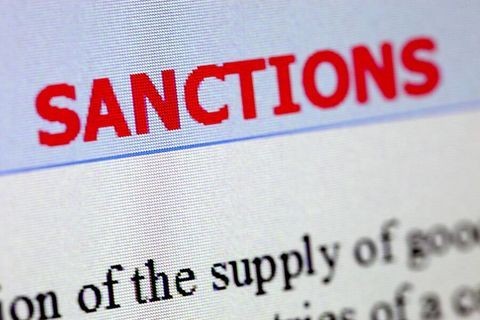Navigating the AI Intellectual Property Maze - Key Points From Congressional Hearing
Client Alert | 6 min read | 04.16.24
On April 10, 2024, the U.S. House of Representatives, Judiciary Committee Subcommittee on Intellectual Property convened Part III to an ongoing discussion and exploration of artificial intelligence (AI) and intellectual property (IP) rights. The session, “Artificial Intelligence and Intellectual Property: Part III - IP Protection for AI-Assisted Inventions and Creative Works,” delved into the nuanced debate over what IP protections should exist for AI-generated or AI-assisted works.
Key Points
- The hearing underscored the need for clarity on the threshold of human involvement required for IP protection in AI-generated works.
- Witnesses discussed how the current U.S. Patent and Trademark Office (USPTO) guidelines could stifle American competitiveness.
- Others contrasted using AI as a tool versus its capacity to independently create was a focal point, and made comparisons to the use of previous technologies like cameras.
- Witnesses agreed that works created substantively by AI should not receive copyright protection, because the purpose of copyright law is to encourage human creativity.
- Human revisions to outputs created by AI were compared to derivative works based on public domain materials.
The hearing proceeded with the following witnesses, providing a window into the current legal landscape and the challenges that lie ahead:
- Claire Laporte, Intellectual Property Fellow and Former Head of Intellectual Property, Ginkgo Bioworks, Inc.
- Joshua Landau, Senior Counsel for Innovation Policy, Computer and Communications Industry Association
- Sandra Aistars, Clinical Professor, George Mason University Antonin Scalia Law School
- Kristelia Garcia, Professor of Law, Georgetown University Law Center
As AI technology continues to evolve, stakeholders must stay informed and engaged. This alert aims to distill the essential points from the hearing and explain how these developments may impact your business strategies and related intellectual property considerations.
AI Authorship and Copyrights
Witnesses provided insights into the current state of case law and the approaches taken by the U.S. Copyright Office (USCO) and the USPTO. They discussed the implications of AI-generated content, the role of human intervention in AI-assisted works, and the importance of maintaining a balance that encourages innovation without diluting the value of human creativity.
The hearing explored the nuances of AI's role in creative processes and the implications for copyright law. The Subcommittee emphasized promoting innovation while ensuring that creations by humans, assisted by AI, are protected. The USCO’s current stance that purely AI-generated works are not copyrightable was highlighted, with the acknowledgement that, as of today, there is no such thing as 100% AI-generated content without human input. The consensus among the panelists was that AI-generated works that lack significant human authorship should not receive copyright protection. This position aligns with the current position of the USCO, which has stated that works generated entirely by AI without human intervention are not copyrightable.
Witnesses and Subcommittee members debated the criteria for determining authorship and how much AI involvement would make a work AI, rather than human authored. The discussion also touched on the training of AI models with copyrighted material and the potential legal ramifications if such training is deemed not to be fair use.
One takeaway was the need for clarity on the extent of human involvement required for AI-assisted works to qualify for IP protection. The current approach of the USCO, which requires creators to disclose and disclaim AI involvement in their works, was debated, with some witnesses advocating for a more nuanced, qualitative assessment of the human artist's engagement with AI tools.
The hearing also showed the need to balance technological advancement against and with individual creators' rights. It was suggested that transparency from companies about the copyrighted works used to train AI systems could help inform creators and allow them to advocate for credit or compensation.
The hearing did not reach a consensus on specific legislative actions but highlighted the complexity of the issue and the need for continued examination of AI's impact on IP rights. The Subcommittee expressed a desire to prevent harm and ensure that the legal framework keeps pace with technological developments while safeguarding creators' contributions.
AI Authorship and Patents
The hearing also addressed the relationship between AI and patents. AI has the potential to accelerate the creative and inventive processes, and there is a concern that overly restrictive patent guidelines could stifle this potential. The USPTO Guidelines for AI-Assisted Inventorship were a focal point, with some witnesses suggesting that the guidelines may need to be revisited to ensure they do not hinder the use of AI as a tool for innovation.
The hearing made clear the evolving nature of AI's role in creative and inventive processes and the necessity for ongoing examination of IP protections to adapt to these changes. Should creations that involve AI be eligible for protection and, if so, how much human involvement is necessary to warrant such protection? The Subcommittee expressed its intent to continue exploring these issues, hoping to provide adequate IP protection for AI-assisted creations while encouraging innovation and maintaining America's competitive edge.
Generative AI and Human Creativity
The hearing’s robust debate on the relationship between human creativity and AI echoed throughout the hearing. Representatives stressed the importance of distinguishing between works wholly generated by AI and those where AI serves as a tool to augment human creativity. As mentioned above, witnesses agreed that works wholly generated by AI do not merit copyright or patent protection. However, works partially generated by AI, with significant human intervention and contribution, might.
Panelists debated the appropriate threshold for human involvement in AI-assisted works, with suggestions ranging from focusing on the human's original intellectual conception to considering the predictability and control exerted by the human over the AI's output. The challenge lies in defining and applying these criteria across various creative domains, from visual arts to music and beyond.
Committee members emphasized the constitutional mandate to promote the progress of science and useful arts through IP protections, and expressed concern that failing to protect AI-assisted works could undermine the incentive structure that drives innovation. The hearing also touched upon the challenges of defining authorship and inventorship in the age of AI, as well as the potential threats posed by foreign entities, such as China, in the context of IP theft.
The hearing thus highlighted the need for a nuanced approach to IP protection for AI-generated and AI-assisted works, recognizing human creativity while acknowledging the transformative potential of AI as a tool for innovation. The panelists advised against immediate legislative action, suggesting that existing law, coupled with further guidance from the USCO and USPTO, would address the evolving challenges posed by AI in the intellectual property landscape.
Conclusion
This hearing casts a spotlight on the pressing need to navigate the intricate maze of AI and IP law. As AI continues to advance and permeate various creative and inventive fields, it is clear that our current intellectual property framework must evolve to address the unique challenges posed by AI-assisted creations. The hearing underscores the importance of maintaining a delicate balance between encouraging innovation and protecting the rights of human creators. It is imperative for stakeholders to remain engaged in this ongoing dialogue and to adapt their strategies in anticipation of potential legislative and regulatory developments.
As your legal advisors, we will continue to monitor these discussions closely and provide you with the most current and actionable guidance to safeguard your intellectual property in an era increasingly influenced and defined by artificial intelligence. Crowell & Moring LLP will continue to monitor congressional and executive branch efforts to regulate AI. Our lawyers and public policy professionals are available to advise any clients who want to play an active role in the policy debates taking place right now or who are seeking to navigate AI-related concerns in financial services, as well as intellectual property, privacy, health care, and other areas.
Note: Our lawyers leveraged AI in creating this client alert, including using a transcript summary created by generative AI. As we explore the potential of generative AI in the legal space, it is our intention and our practice to be transparent with our readers and to showcase the results we are achieving using generative AI with publicly available resources. Crowell’s AI group is comprised of lawyers and professionals across our global offices, including from Crowell & Moring International (CMI), our international public policy entity, with decades of sector-specific experience. We intend to lead by example in our own responsible use of AI, as it pertains to both the risks and benefits. Should you have questions about the use of generative AI in the legal sector or Crowell’s use of AI, please contact innovation@crowell.com.
Contacts
Insights
Client Alert | 9 min read | 10.28.25
Key Takeaways from a Consequential Month of Russia-Related Sanctions
The United States, European Union, and United Kingdom have significantly escalated Russia-related sanctions the past month, including the Trump Administration’s first sanctions directly imposed on Russia. These coordinated actions—which particularly target the Russian energy sector—indicate that Russia sanctions remain on the geopolitical agenda and require multinational companies to remain vigilant in their compliance with those sanctions.
Client Alert | 1 min read | 10.27.25
Client Alert | 3 min read | 10.27.25
Client Alert | 3 min read | 10.24.25





